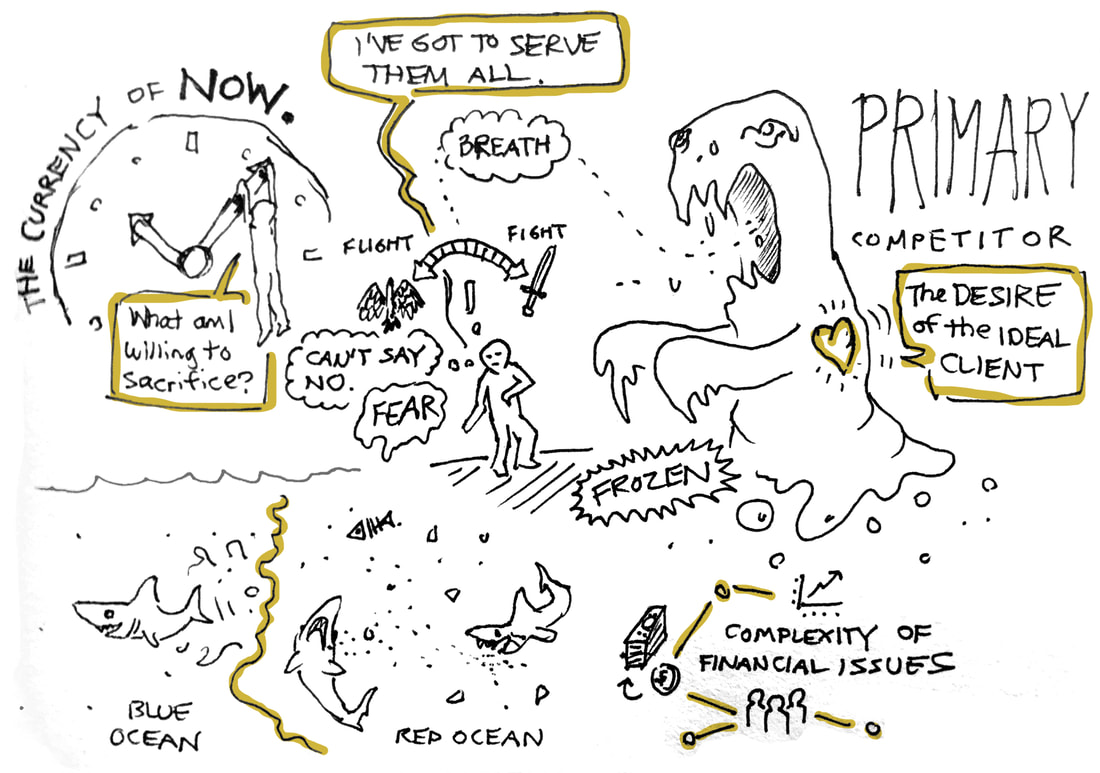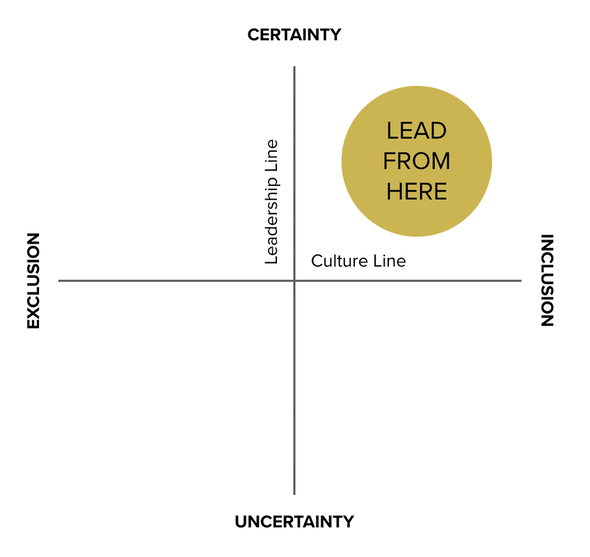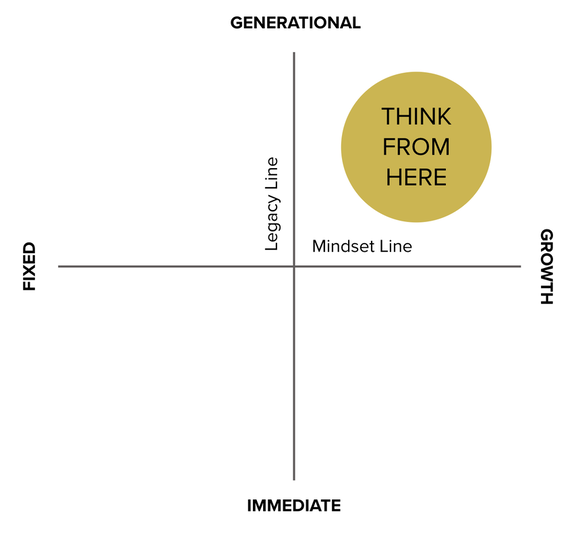|
Illustrious is a leader in the change management and team alignment space. Since its founding in 2020, Illustrious has helped companies orient, pivot, scale, and simplify. Here are the four core values that drive their team of talented, visual consultants.
Energizing Creativity As artists, we believe there is a direct line between innovation or creativity and our ability to be in the present moment and improvise. This invisible line can be tense or slack. When it is tuned up it can be played like a guitar or piano. We are at our best when helping our clients create harmony from dissonance and we love helping them shine. Compassionate Curiosity As facilitators and coaches, we treat active listening as a valued skill in order to discover needs and opportunities. We genuinely like people and want to learn more about them. We cherish stories and love hearing them. People are at their best when they feel heard, valued, trusted, and understood. Belief in Human Potential As humans, we have a relentless belief in the greatness of other humans. We don’t see them in their current state of blame, confusion, uncertainty, fear, or insecurity. We see the white, hot light at their center. We see them on their path to future growth as they commit to being the ideal version of themselves. Humans are at their best when someone sees them deeply and believes in them. Commitment to Quality Outcomes As thought partners in your business, we are focused on professional mastery. That means we are committed to learning, transparent processes, dress and technical rehearsals, and enthusiastic attention to detail. The sooner we get it right, the sooner you can identify the bright line through your organization’s thinking. A business is at its best when its leaders and teams are aligned on the vision, culture, story, and strategy.
0 Comments
It was 1995, and I was fresh out of high school. I had been a busboy, a bag boy, worked construction on and off as a mason’s assistant and labored in a fire sprinkler shop. It was time for me to buckle down and get a real job. I applied anywhere and everywhere. I wanted to be a graphic designer, and that's what I was studying in college, but I didn't have the experience.
Eventually, I was hired at the Florida Spine Institute as a medical transcriptionist. A family member must have pulled some strings as a favor. My words per minute wasn't the most impressive, but I managed to land the gig. My interviews went well, I had filled out my W-2 forms, I was placed in the system and told to report to work on Monday. I was all set to go. It was my first day on the job when I sat in front of a computer screen, received a pair of headphones and began to drown in a stream of surgical dictation. It wasn't long before my eyes began to sting and my brain began to slow down. I choked on the flood of foreign, multisyllabic words coming through the headset. So, I paused the recording and took a break. Next to the computer sat a blank yellow legal pad and a blue ballpoint pen. I had been doodling on that yellow legal pad for no more than 5 minutes (probably a skull, unicorn, dragon or something) when the supervisor walked up behind me. She came to a full stop, cleared her throat, and asked to see me in her office. Being caught doodling was a horrible feeling. The shame and remorse ran through my body. I was sure that I was to be reprimanded for the doodling. I was convinced that I would be scolded and asked to focus and promise not to do it again and put back out on the floor. But that's not what happened. The venetian blinds in the supervisor’s office were drawn, giving her a slight silhouette. She sat in an overstuffed leather chair at a huge wooden desk. On the desk was one of those green banker’s lamps. It was the first time I’d seen one of those in real life. She said, “We don't pay you to draw.” Then she took a deep breath and said that it wasn't “going to work out.” I was fired on the spot. And, it was baffling to me at the time. Part of me was shocked that there would be no second chance. Another part of me started to think that this was the way “grown-ups” in the “real world” operated. I feared this was the way adults did things – and that I wasn't ready for a real job. I began to think that there would never be a place for me in the workforce unless I stifled my creative side; that my creativity might be my handicap. Some people don’t recover from a soul-crushing brush with white collar corporate America. Some people allow the criticism of others to extinguish their spark. But, I knew that if I was to be successful and remain in integrity, I would need to either find a box to fit in that looked more like me or find a way to create my own. I vowed to find my tribe among creatives. I worked in music and PR and spent over a decade in media as a Marketing Director at a scrappy alternative news-weekly. Eventually, I landed a gig working for a consultant as a Graphic Recorder. I was paid to actually doodle in business meetings. At the consultancy, I was surrounded by people who harnessed creativity and play to drive business outcomes. We made a living by thinking outside the box. We sketched, doodled, mind mapped, and built analog prototypes using scissors and glue. We filled every bit of blank space on the walls with Post-its. Today, I own my own consultancy and have trained many facilitators to do what I do. At Illustrious, we enable the art of visual thinking and innovation. And no one gets fired for doodling. According to the Wall Street Journal, WeWork CEO Sandeep Mathrani recently said that remote workers are less-than-engaged with the companies they work for. Mathrani’s conflict of interest here is staggering as his business model clearly depends on people leaving their homes. Then, Morgan Chase & Co.'s Jamie Dimon said remote work doesn’t work well “for those who want to hustle.” This contradicts a recent SHRM article which stated that:
You cannot tell me that remote workers don't have "hustle" or that they aren't committed. As I see it, there are only two downsides to an all-remote team. The first is losing physical touch and biofeedback loops created by being in the presence of others. The second is losing the opportunity for leadership's shitty ideas to go sour around the water cooler. Having that side conversation in the hallway or throwing some over-the-cubicle shade can be a necessary ingredient to determine viability and feasibility or to create stable bonds in the culture. CEOs leading in remote environments risk fabricating grim fairy tales of how work is going unless they are surrounded by the inputs and outputs of the team. I've seen CEOs make confident and horrible decisions despite the cost to culture and strategy. I've seen leaders get caught up in their own bubble and believe their own bullshit because no one would push back. I've seen entrepreneurs endlessly chase new and novel ideas, calling it "innovation." I've seen too many bosses mistake faith, loyalty or acquiescence for buy-in. Real alignment – real wisdom – is a matrix of legacy, mindset, certainty and inclusion. This is the mythical Zone of Genius. If you aren't leading from this place, you may very well destroy what you're building. The Leadership Line (Uncertainty → Certainty) Certainty in this case does not mean your personal confidence or optimism about your vision or the business’s prospects. On the flip side, I'm not talking about uncertainty in terms of futures, foresight or plausibility. I’m not saying that you should claim to know things you don’t. I'm talking about organizational uncertainty -- a lack of vision or transparency, poor communication, no line of sight into or across divisions, low team morale/confidence, lack of alignment around (or commitment to) OKRs, etc. Uncertainty in this sense is deeply felt and unmistakable. It makes the business (and those inside it) feel like they are floating on a loosely-bound raft, sure to drown at any moment. Leading with certainty lowers resistance to change because everyone has enough information, there is transparency in the planning and they are confident that you’re the leader that will take them there. The Culture Line (Exclusion → Inclusion) On one end of the culture line, team members are excluded, left out of rooms or conversations they feel are important, and kept in silos. An inclusive culture convenes the right voices around the table, puts the right people in the right seats, creates openness and psychological safety, and facilitates meaningful and productive dialogue among team members. An inclusive culture might look diverse or include different opinions or communication styles, but it always respects the individual and treats conflict as an opportunity for growth. The Mindset Line (Fixed → Growth)
In her 2008 book, Mindset, Carol Dweck wrote that people with a fixed mindset avoid challenges, give up easily, see effort as fruitless, ignore feedback and are threatened by the success of others. Those with a growth mindset embrace challenges, persist in the face of obstacles, see effort as the path to mastery, learn from criticism and find inspiration in others’ success. Great leaders view themselves and others with a growth mindset. An individual’s mindset varies wildly depending on what their mind is fixed upon. Being able to spot a fixed mindset is the key to loosening it up and allowing for growth. Notice when your beliefs are telling you that something or someone is “impossible.” Possibilities emerge when you quickly reframe negativity. The Legacy Line (Immediate → Generational) This line indicates the depth or complexity of your decision-making. On one end, we find immediate and short-term benefits to yourself, your reputation, or business. These are quick wins that yield small- to medium-sized returns. On the other end, we see decisions that take into consideration and may benefit the seventh generation and beyond. These decisions might be described as visionary, ethical, sustainable, or having a “long tail.” These require patience and deliver longer-term results, sometimes even beyond the lifespan of the founder. |
Details
ABOUT THE AuthorJoran Slane Oppelt is an international speaker, author and consultant with certifications in coaching, storytelling, design thinking and virtual facilitation. Archives
March 2024
Categories
All
|






 RSS Feed
RSS Feed